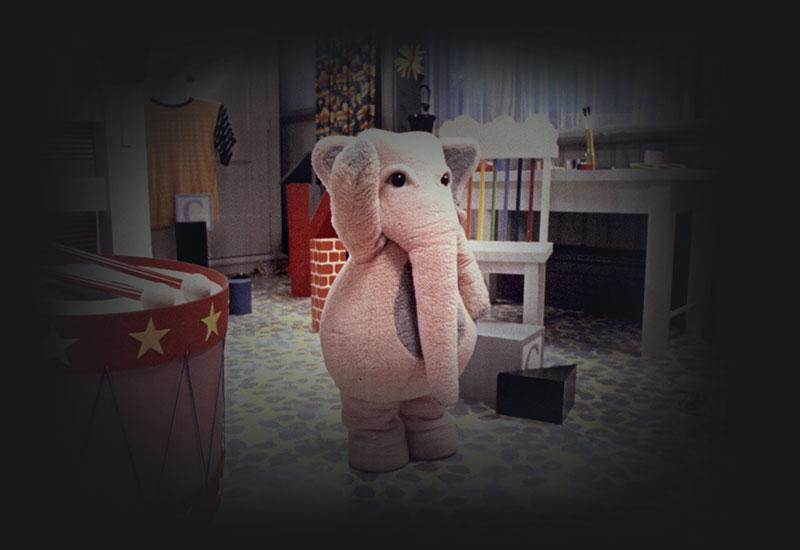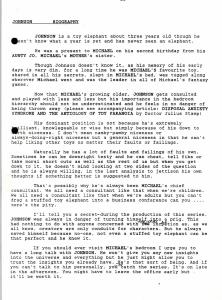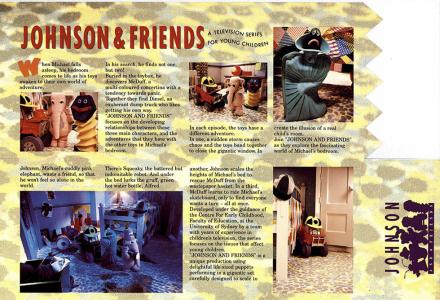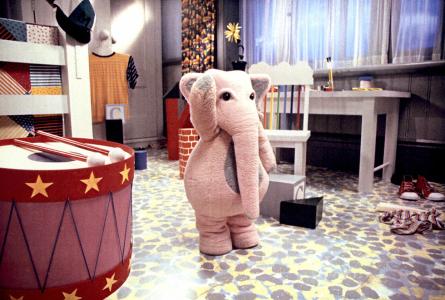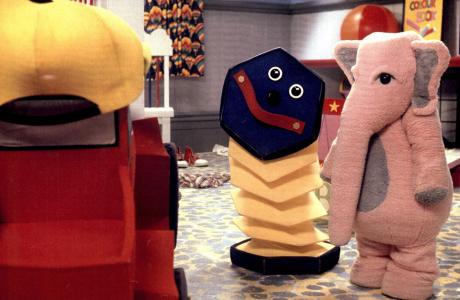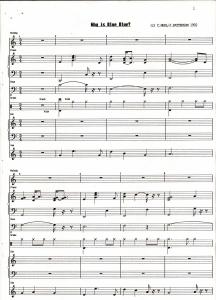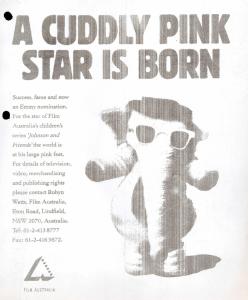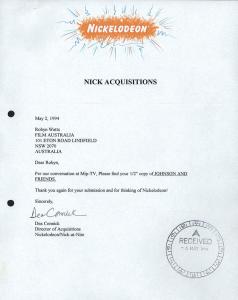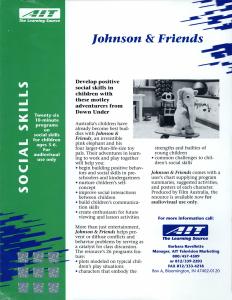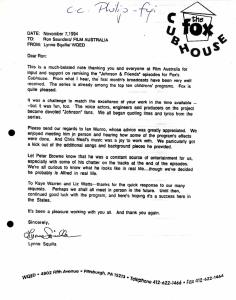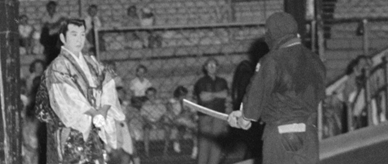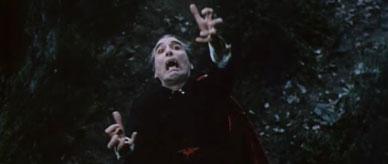Children's television sensation Bluey is inescapable, not only in Australia, but worldwide. But it's only the latest in a long line of quality Australian children's shows. So, let's wind back the clock to the early Nineties. It's time to meet Johnson and Friends.
Meet the toys … and a hot water bottle
When 5-year-old Michael goes to sleep at night, his toys come alive and go on adventures. There's brave Johnson the pink elephant, Diesel the truck, McDuff the concertina, Squeaky the Robot and grumpy hot water bottle Alfred.
Johnson and Friends was created in 1990 by Australian film industry veterans Ron Saunders, John Patterson and Ian Munro. It was produced by Film Australia, the Australian government film production company which was consolidated into Screen Australia in 2008. This means that National Archives has hundreds of pages of documentation about the creation of the show. It's an absolute treasure trove for TV enthusiasts, providing a fascinating insight into the production, marketing and merchandising of a children's show.
To start with, each character has its own complete one-page biography. Highlights include McDuff the Concertina: 'After Michael accidentally sat on her, her vocal range has always been a bit off', and Diesel the truck: 'The positive aspects of his personality are that sometimes his batteries go flat.' There are also descriptions of the costumes and sets. Each of the characters was played by an adult in a full-sized costume, with the sets and props built extra large to give the illusion of a child's bedroom.
The documents also include episode summaries, cast contracts, and sheet music for the show's many original songs.
A cuddly pink star is born
Johnson and Friends premiered on the ABC in 1990. It was immediately successful, and a second series was ordered. The press release announcing the second series claimed that 'immediately after the last program went to air … ' the ABC was 'inundated with two year-olds ringing or writing to ask where Johnson was.' Johnson was proving as popular as the iconic Thomas the Tank Engine.
Not satisfied with just a national market, the series was taken to children's film festivals around the world, where it received acclaim. At the International Emmy Awards in 1991, it was nominated for the Emmy for Best Children and Young People.
International sales rolled in. Soon Johnson travelled to the United Kingdom, Japan, Germany - even countries like Angola and Lesotho. Johnson and Friends would eventually screen in over 50 countries worldwide.
The producers also got to work merchandising. Toys, jigsaw puzzles, music CDs, clothing and all the usual paraphernalia were produced and sold not just in Australia but also in Japan and the United Kingdom. There were even stage shows.
But there was one market that remained elusive. The United States of America.
How to get an elephant to America
When Johnson and Friends was nominated for its Emmy in 1991, the producers took out an advertisement in American trade magazine Variety in the hope that it would lead to further interest. This advertisement didn't come cheap, at $2780 US in 1991. But by 1994, even with 2 series out and one more in production, Johnson hadn't made it on to American screens. Files in National Archives' collection contain rejection letters from Discovery Channel, Nickelodeon and Lifetime, among others. One interesting letter is from Catherine Lyon, the Associate Director of Children's Programming at America's Public Broadcasting Service (PBS). In it, Catherine praises Johnson and Friends as 'delightful', but declines on the basis that PBS already 'have plenty of puppets in our preschool series'. At that time, PBS was the home of the ultimate children's puppet show: Sesame Street – that's tough competition.
Finally, the series was sold to Fox in 1994. The 10 minute Johnson and Friends episodes would be featured as part of the anthology series The Fox Cubhouse. However, they would have to be entirely redubbed, and in some cases slightly rescripted, to avoid confusing American children with Australian accents and slang. Only Peter Browne, the original voice of Alfred the hot water bottle, would reprise his role in the American version. It's a far cry from today, with children around the world learning Australian slang from Bluey.
Finally, Johnson was on American TV. It was a hit. So much so, that Fox commissioned an additional, American-original series in 1995. This final series then had to be dubbed back into Australian accents when it aired on ABC in 1997.
A children's TV legacy
Johnson and Friends ran on repeat on the ABC until 2002, and is remembered fondly by Nineties kids from around the world. The creators of Johnson and Friends would go on to create or work on many other acclaimed Australian children's programs, including Magic Mountain, Hi-5, Bananas in Pyjamas and more. Australia's legacy of children's entertainment continues to inspire, teach and entertain kids the world over.

